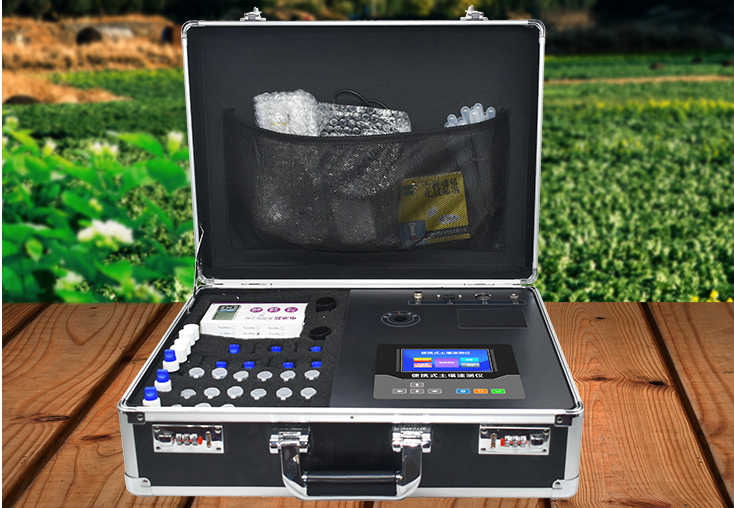Soil nutrient detection plays a vital role in agriculture and environmental management. Understanding the nutrient content of the soil is essential for optimal crop growth and productivity. In recent years, soil nutrient detectors have gained popularity as valuable tools for accurately measuring and monitoring soil nutrient levels. In this article, we will explore what soil nutrient detectors are, how they work, and the advantages they offer in soil management.

A soil nutrient detector is an electronic device that measures
the concentration of essential nutrients in soil. It helps farmers, gardeners, and researchers assess the fertility and health of the soil, ensuring that plants have access to the necessary nutrients for their growth. Nutrient detectors are typically designed to measure primary macronutrients like nitrogen (N), phosphorus (P), and potassium (K), as well as secondary macronutrients like calcium (Ca), magnesium (Mg), and sulfur (S). Some detectors can also measure trace elements or micronutrients, such as iron (Fe), manganese (Mn), zinc (Zn), copper (Cu), boron (B), and molybdenum (Mo).
Soil nutrient detectors use various techniques
to measure nutrient levels in the soil. One common method is through ion-selective electrodes. Each electrode is specific to a particular nutrient, and when inserted into the soil, it measures the ionic concentration of that nutrient. The detector then converts the electrical potential generated by the electrode into a nutrient concentration value.
Another method used by some detectors is optical sensing
This technique relies on the fact that certain nutrients have distinctive optical properties. By emitting light of specific wavelengths and measuring the light reflected or absorbed by the soil, the detector can determine the nutrient concentration. This method is particularly useful for measuring trace elements, as they often have unique spectral signatures.
Soil nutrient detectors require calibration before
use to ensure accurate measurements. Calibration involves comparing the detector’s readings with known nutrient concentrations in calibration solutions. By adjusting the detector’s output to match the expected values, accuracy and reliability are maintained.
One of the advantages of using soil nutrient
detectors is their ability to provide real-time monitoring of nutrient levels. Traditional soil testing methods involve sending samples to a laboratory and waiting for results, which can be time-consuming. With nutrient detectors, users can obtain instant measurements in the field, allowing for timely decision-making and targeted nutrient applications.
Furthermore
soil nutrient detectors can provide spatial information about nutrient variations across a field. By taking multiple measurements at different locations, a map of nutrient levels can be generated. This allows for site-specific nutrient management, where different areas of the field receive different nutrient treatments based on their specific needs. This precision approach helps optimize nutrient use, reduce costs, and minimize environmental impact.
Soil nutrient detectors also enable the evaluation of nutrient trends over time. By continuously monitoring nutrient levels, patterns and changes can be identified. This information helps farmers and researchers make informed decisions regarding fertilizer application rates, timing, and nutrient management strategies.
In addition to monitoring nutrient levels, some advanced soil nutrient detectors also measure other soil properties, such as moisture, pH, and temperature. These additional measurements provide comprehensive insights into soil health and guide irrigation and soil amendment practices.
Despite their advantages, soil nutrient detectors do have limitations. Factors such as soil moisture, organic matter content, and the presence of certain chemicals can affect the accuracy of measurements. Therefore, it is crucial to interpret the data obtained from nutrient detectors in conjunction with other soil information, such as soil texture, crop requirements, and historical data.

In conclusion, soil nutrient detectors are valuable tools for assessing soil fertility and managing nutrient levels. They offer real-time measurements, spatial information, and trends over time, enabling farmers, gardeners, and researchers to make informed decisions about nutrient management practices. While there are limitations to their accuracy, when used in conjunction with traditional soil testing methods, nutrient detectors can greatly contribute to sustainable agriculture and environmental stewardship.
